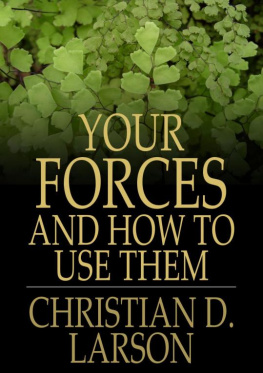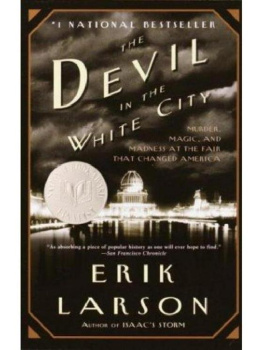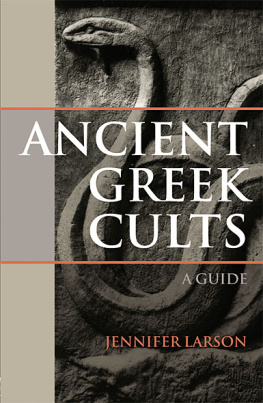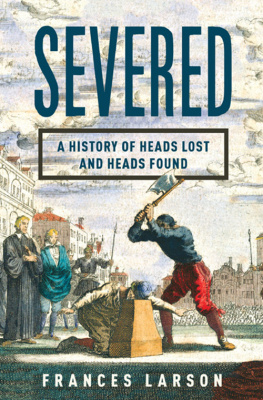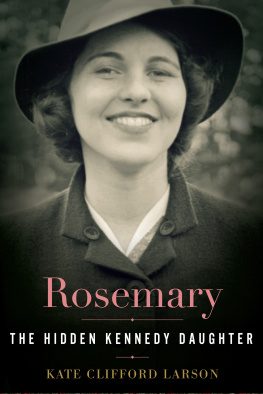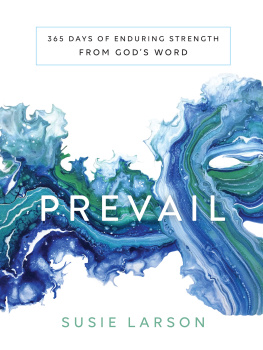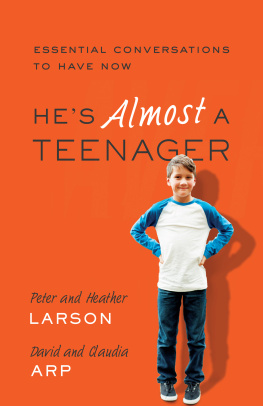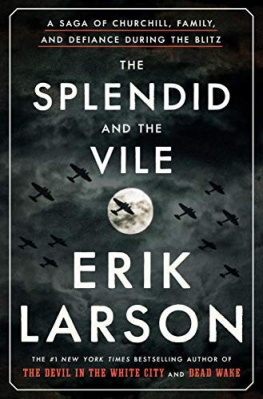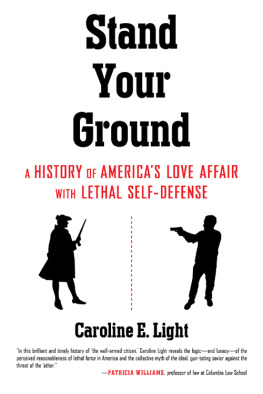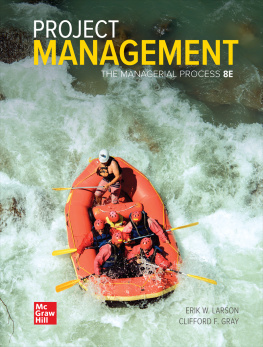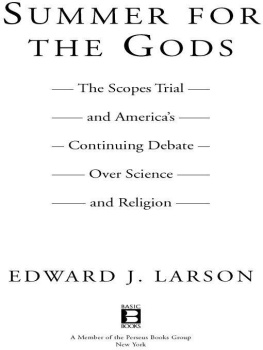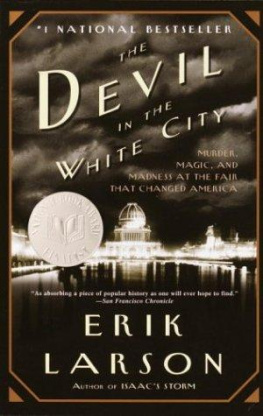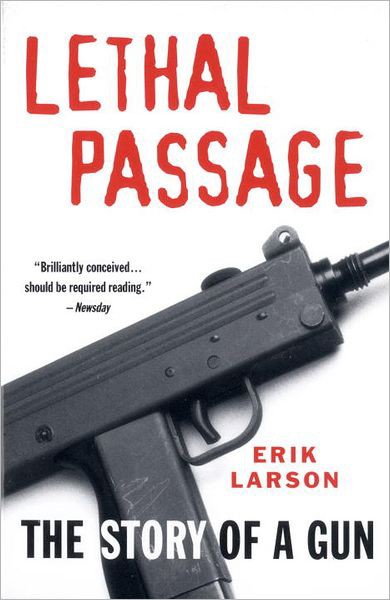Acclaim for
ERIK LARSONS
LETHAL PASSAGE
Larson creates one of the most readable anti-gun treatises in years.
Washington Post Book World
Shocking compelling Lethal Passage is a perfect blend of reporting and storytelling.
Detroit Free Press
Larson touches on all aspects of the gun issue in this country. There is a feeling in America that perhaps enough lives finally have been terminated or forever changed by the pull of a trigger. That something real must be done. Erik Larson gives great voice to that feeling.
San Diego Union-Tribune
By tracing the path of a firearm that is worthless for hunting or target practice, we see how our nations laws have fallen out of sync with modern life. Erik Larson shows us just what fearful legacy our national self-image is leaving our young.
Dallas Morning News
ERIK LARSON
LETHAL PASSAGE
Erik Larson writes for the front page of the Wall Street Journal. His articles and essays have appeared in The Atlantic, Harpers, and The New York Times Magazine. He is also the author of The Naked Consumer. He lives with his wife and their two children in Baltimore, Maryland.
First Vintage Books Edition, January 1995
Copyright 1994, 1995 by Erik Larson
All rights reserved under International and Pan-American Copyright Conventions. Published in the United States by Vintage Books, a division of Random House, Inc., New York, and simultaneously in Canada by Random House of Canada Limited, Toronto. First published in hardcover in slightly different form by Crown Books, a division of Random House, Inc., New York, in 1994.
All rights reserved. No part of this book may be reproduced or transmitted in any form or by any means, electronic or mechanical, including photocopying, recording, or by any information storage and retrieval system, without permission in writing from the publisher.
The Library of Congress has catalogued the Crown edition as follows:
Larson, Erik.
Lethal passage: how the travels of a single handgun expose the roots of Americas gun crisis / by Erik Larson.1st ed.
p. cm.
1. Gun controlUnited States. 2. FirearmsSocial aspectsUnited States. 3. MurderVirginiaVirginia BeachCase studies. 4. Elliot, Nicholas Walden Herman. 5. MurderersVirginiaVirginia BeachBiography. I. Title.
HV7436.L37 1994
364.15239875551dc20 93-34560
eISBN: 978-0-307-80331-3
v3.1
For all children who have
faced a gun
Contents
The essential American soul is hard, isolate,
stoic, and a killer.
D. H. L AWRENCE
CHAPTER ONE
I NTRODUCTION
O N A BITTER , COLD D ECEMBER MORNING , a sixteen-year-old boy walked into the Atlantic Shores Christian School in Virginia Beach, Virginia, with a semiautomatic handgun and several hundred rounds of ammunition tucked into his backpack. His name was Nicholas Elliot. By midmorning, a forty-one-year-old teacher had been shot dead, and another teacher, struck by two nine-millimeter bullets fired at point-blank range, was extraordinarily lucky to be alive. Two other teachers narrowly escaped Nicholass bullets. One found herself running a zigzag pattern through the schoolyard as Nicholas fired round after round at her back. The other, a man who tackled Nicholas and saved the lives of a roomful of crying and praying teenagers, felt a bullet breeze past his head.
In a nation accustomed to murder in large multiples, the shootings received little out-of-state coverage. A single homicide barely rates mention beside the events at Stockton and San Ysidro, two names that ring of casual mass violence the way the names of great battlefields ring of valor. But the story of how that gun wound up in Nicholass backpack, how the gun came to exist at all, constitutes a cultural detective story that tells a great deal about the roots of Americas gun crisis. Nicholas in effect carried with him the good wishes of an industry and a culture whose institutions and mores have helped make the things he did that morning so commonplace in America.
Nicholas carried a gunthe Cobray M-11/9that by any reasonable standard should never have become a mass-consumer product. He acquired the gun from a federally licensed dealer using a means that puts thousands of guns into the hands of illegal users each year, yet that existing federal gun-trade regulations do much to encourage. This dealer was a good dealer, yet sold numerous weapons to traffickers and killers, raising a fundamental question of whether the costs imposed on the rest of us even by supposedly honest dealers are simply too high for society to bear. Moreover, Nicholas carried with him a cultural bloodlust fed by marketers and their close allies in the gun press who routinely play to Americas homicide fantasy and stoke our widespread belief in the gun as problem-solver.
None of this, of course, absolves Nicholas of his own responsibility for what occurred at Atlantic Shores, nor does it absolve society at large of its responsibility for the mass disenfranchisement of Americas underclass, in particular young black men. Clearly, individual responsibility and socioeconomic tension are the tectonic plates that shape crime. As one gun buff proposed to me, half in jest, the way to reduce crime is to buy back guns not with cash, as many cities have tried, but with jobs.
What follows, however, is not so much the story of Nicholas Elliot, but rather of his gun and its travels. I set out to trace his weapon from the moment its design was conceived to its use at Atlantic Shores as a way to explore how guns migrate from the so-called legitimate gun-distribution network to the hands of killers, robbers, and inner-city gangsters. Every gun used in crime starts out in that network, but somewhere along the way gets diverted. But where and how? These questions get lost amid the daily reports of shootings and the numbing tallies of lives lost each year. Pick up a copy of a major newspaper and you see story after story about gunshot death and injury, but you rarely read where the gun came from or how it was acquired. The absence is understandable. Although television cop shows would have us believe otherwise, it takes a lot of effort for the police and the Bureau of Alcohol, Tobacco and Firearms to trace the origins of a gun, largely because of obstacles deliberately inserted into the process by federal law. When a crime has just occurredthat is, when the news is fresh and most marketableno one can know for sure exactly how the gun reached the shooter. The shooter himself may not know how many others handled the gun before it came into his possession. Some guns simply cannot be traced. By the time the police do learn where and how a gun originated, the shooting is already old news. Yet by tracing the migration of guns, one comes readily and vividly to understand where the nations current patchwork of gun controls have gone astray, and how easily they could be fixed to the increased satisfaction of gun owners and gun opponents alike.
I chose a single gun, used in a single homicidenot even a terribly lurid homicideprimarily as a means of cutting through the rhetoric of extremists on both sides of the gun debate. Guns are a subject that too often divides America into warring camps, even though the beliefs of the great, moderate mass of Americans, whom we too readily classify in combat taxonomy as pro-gun and antigun, gun nut and gun hater, simply arent that deeply opposed. Somewhere along the line, extremists on both sides succeeded in shaping the debate so that no one has a choice but to leap into a trench and start firing away with whatever ammunition has been piled near at hand, be it distorted statistics or empty slogans. (My favorite: If guns are outlawed, only outlaws will have guns.) The two camps have more in common than not: they both want to make sure that guns only wind up in the hands of stalwart, responsible citizens.


